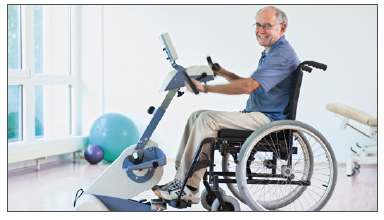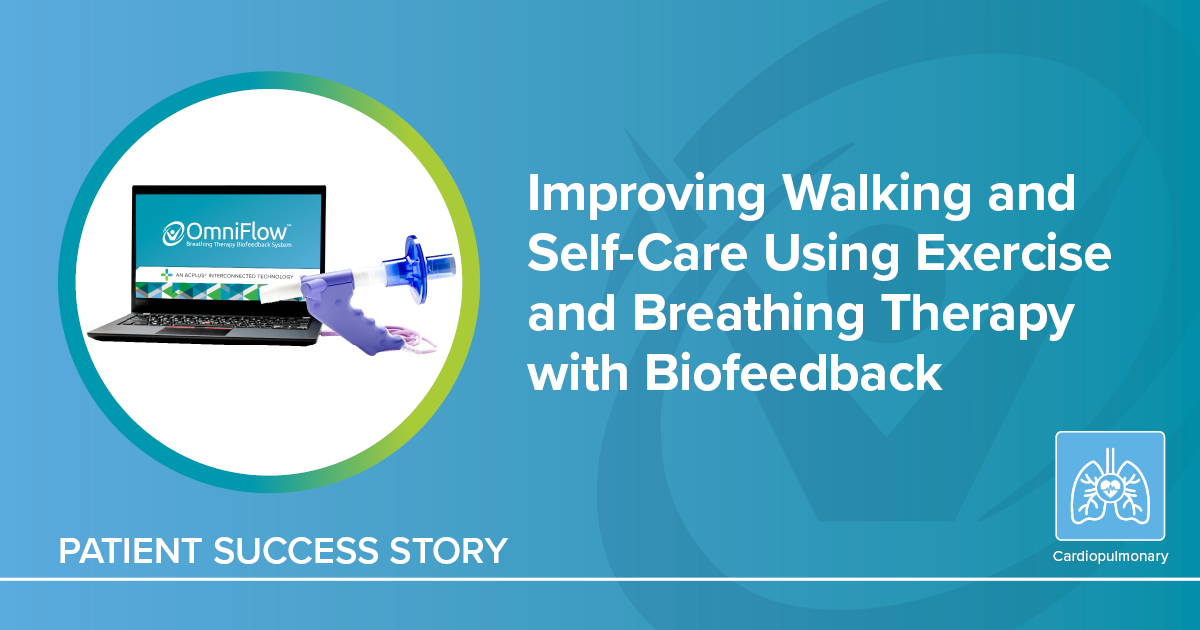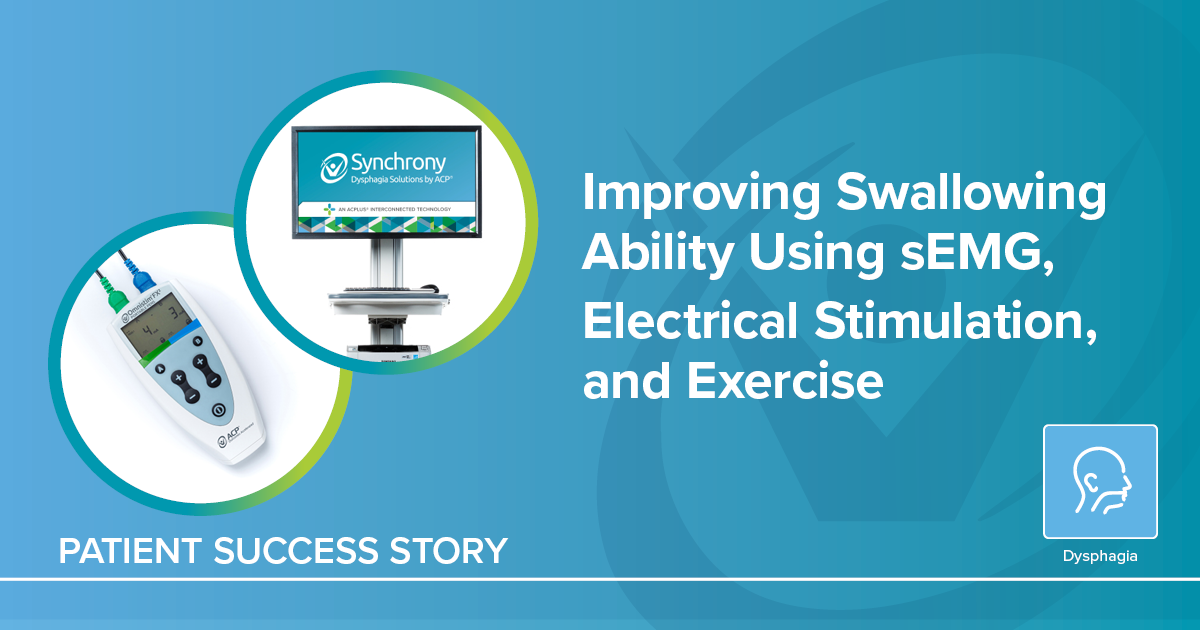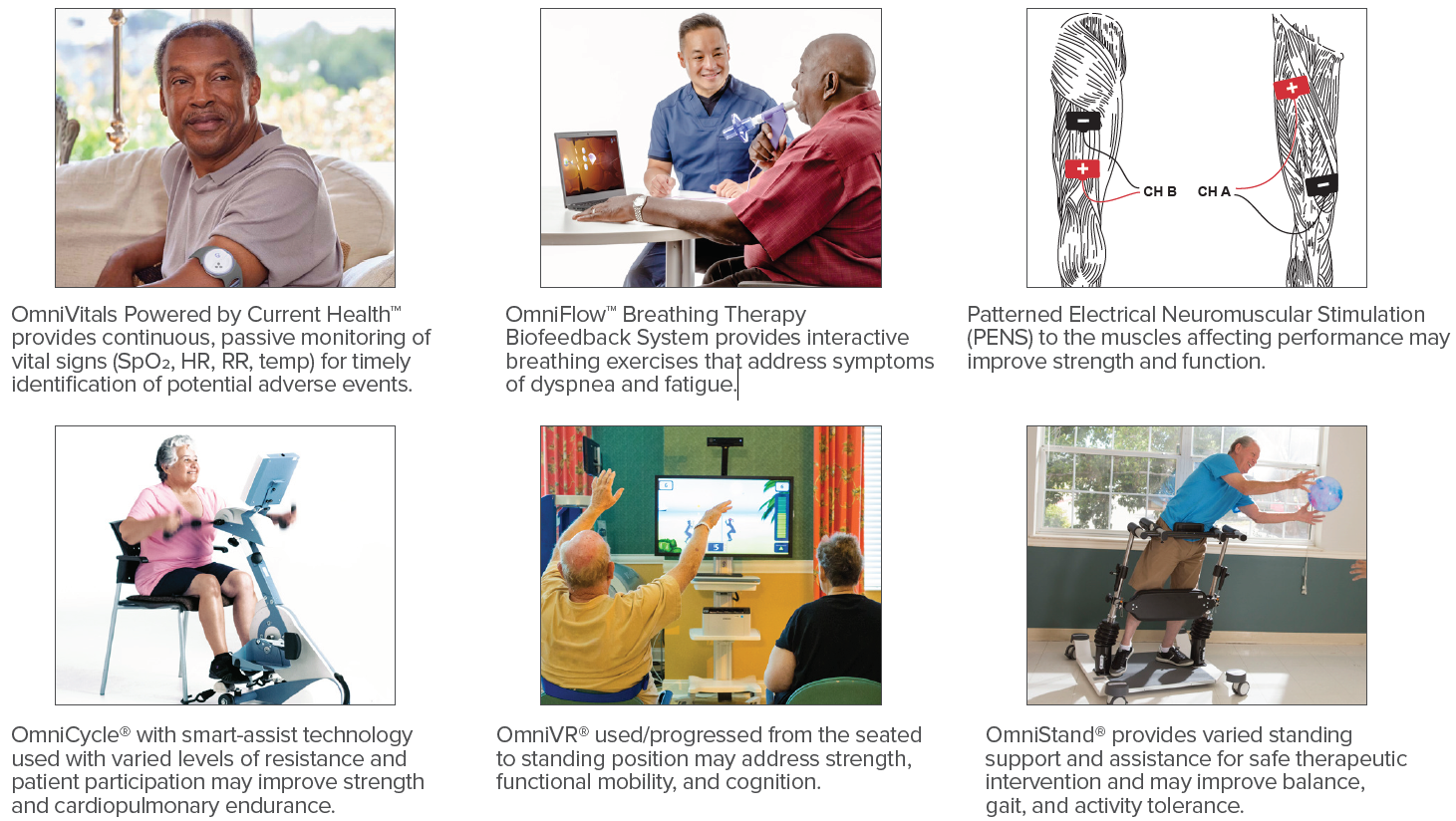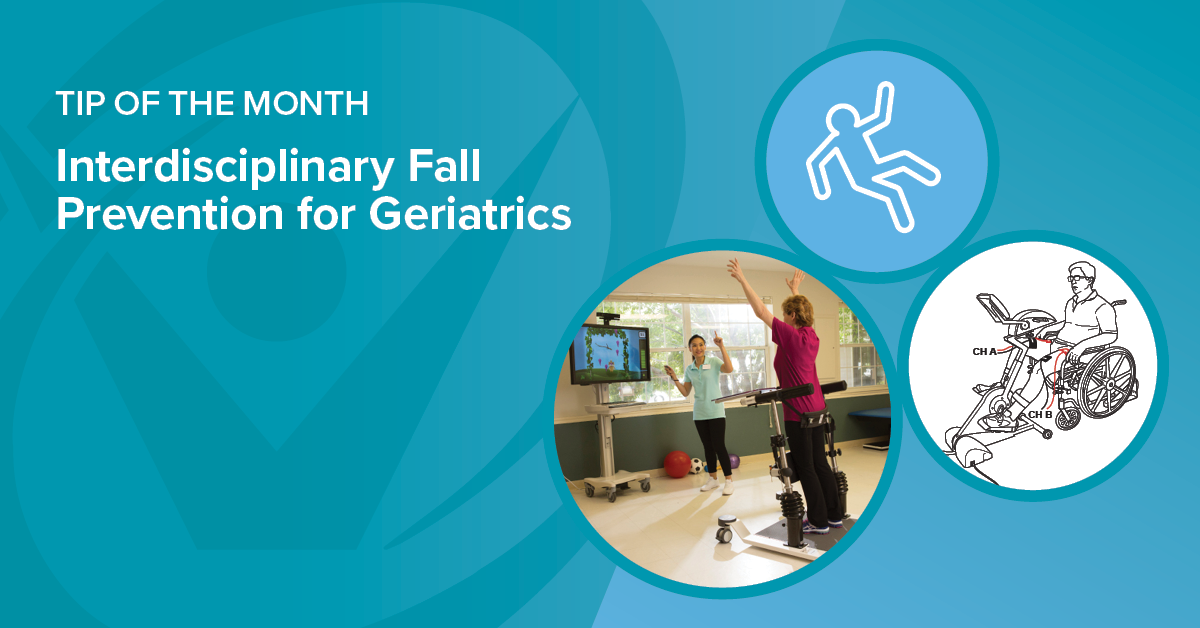Parkinson’s disease (PD) is a progressive neurodegenerative disorder often requiring therapy to address motor symptoms such as bradykinesia, rigidity, tremors, shuffling and freezing gait, poor postural control, and impaired balance. Exercise plays a key role in rehabilitation for this population with additional benefits being achieved by incorporating biophysical agents and advanced technologies. Research demonstrates that exercise improves motor skill performance, which may be enhanced with cognitive engagement through feedback, cueing, dual-tasking training, and motivation (Petzinger, et al., 2013).
Interventions for Individuals with Parkinson's Disease
Topics: Clinical Tip, Neuro Rehab
Virtual Reality in Fall Prevention
According to the CDC, more than one in four older adults fall each year. Falls may lead to fear of falling, decreased mobility, dependence, increased risk of future falls, and even death. The goal of a fall prevention and balance program is to decrease future falls and improve functional mobility, safety, and quality of life. Rehabilitation for those at risk of falling may include training for static and dynamic balance, gait, dual-task (DT) activity, and cognition which may be accomplished with virtual reality.
Topics: Fall Prevention & Balance, Clinical Tip
Pain*
Is your resident experiencing pain?
• Always assess pain level
• If resident is in pain, report immediately
Topics: Fall Prevention & Balance
Decreasing Pain and Improving Strength Using Ultrasound, Electrical Stimulation, and Exercise
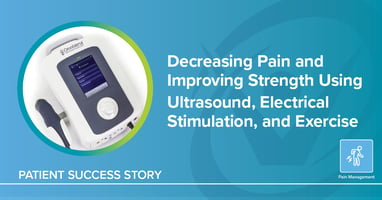
Patient Information: Female, Age 80
Diagnosis: Subluxed Humerus / Pain
History:
This woman, a long-term care resident of a skilled nursing facility, was referred for rehabilitation services to address pain, decreased strength, and impaired motion of the left shoulder after experiencing a fall which caused her left shoulder to become partially dislocated (subluxed). Prior to her fall, she was able to dress independently.
Topics: Pain Management, Patient Success Story
Improving Activity Tolerance and Functional Mobility Using Breathing Therapy and Exercise
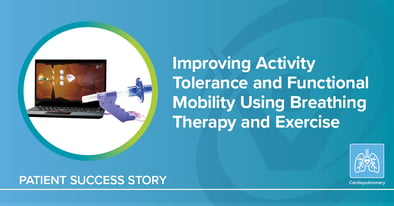
Patient Information: Female, Age 64
Diagnosis: Acute Respiratory Failure / COVID-19 / Chronic Obstructive Pulmonary Disease (COPD)
Topics: Patient Success Story, Cardiopulmonary
Improving Walking and Self-Care Using Exercise and Breathing Therapy with Biofeedback
Topics: Patient Success Story
Looking beyond Strength Training: The Importance of Motor Learning in Swallowing Rehabilitation
Strength training and repetition of motor activity alone is not thought to result in functional recovery where impaired motor performance is the baseline. We know this to be true in movements required for both speech and swallowing in our patients who experience ataxia, apraxia, and other motor disruptions. Encouraging a patient with dysphagia to simply “practice” a dysphagic swallow with no modification to this task, is unlikely to produce a desired effect (Huckabee & McCrae, 2014).
Topics: Dysphagia
Improving Swallowing Ability Using sEMG, Electrical Stimulation, and Exercise
Patient Information: Male, Age 71
Diagnosis: Subdural Hematoma / Oropharyngeal Dysphagia
History:
This gentleman was admitted to a skilled nursing facility for rehabilitation services following hospitalization due to a fall, which resulted in a traumatic subdural hematoma (bleeding between the skull and brain). He was then diagnosed with encephalopathy (damage to the brain) and oropharyngeal dysphagia (difficulty swallowing), with a feeding tube placed during his hospitalization to provide nutrition and hydration. Prior to his accident, this gentleman consumed a regular diet and drank thin liquids.
Topics: Dysphagia, Patient Success Story
Rehabilitation in Individuals with Long COVID
According to the CDC, in the U.S. there have been more than 33.9 million cases since January 2020. As many as 1 in 10 of those who develop COVID-19 exhibit new and prolonged symptoms lasting 12 weeks or longer. This is known as long COVID and occurs regardless of the severity of the acute illness. These individuals may have multisystem involvement with the most common symptoms after 6 months being fatigue, post-exertional symptom exacerbation (PESE), and problems with memory and concentration (brain fog). Therapists should screen for PESE, a worsening of symptoms typically 12 to 48 hours following even minimal cognitive, physical, emotional, or social activity that may last for days or weeks. (World Physiotherapy, 2021)
Topics: Clinical Tip, Cardiopulmonary
Interdisciplinary Fall Prevention for Geriatrics
In a recent CDC Morbidity and Mortality Weekly Report, Moreland & Lee (2021) analyzed 2018 U.S. data which revealed individuals 65 and older had 2.4 million emergency department visits and more than 700,000 hospitalizations due to unintentional injuries. Greater than 90% of these injuries were related to falls. This shows the importance of an effective interdisciplinary fall prevention and balance program for the geriatric population.
Topics: Fall Prevention & Balance, Clinical Tip

